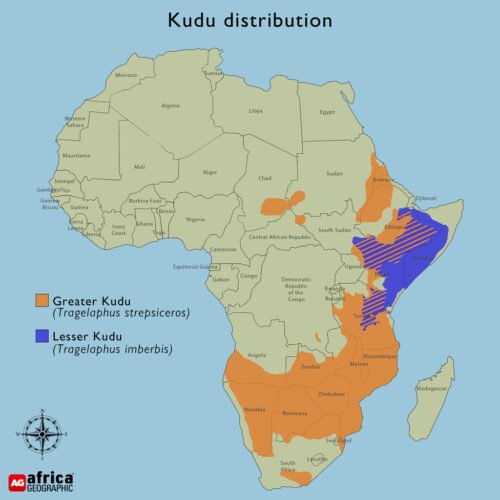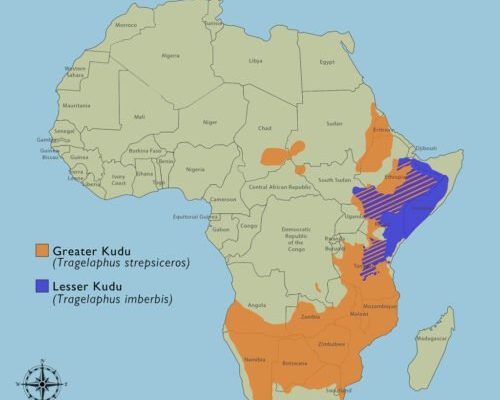
Kudus are primarily found in the eastern and southern parts of Africa. They prefer regions where they can blend in and thrive, making their homes in a variety of landscapes ranging from arid areas to dense, wooded forests. Their unique adaptations allow them to navigate through these environments, which is why understanding where kudus live is so essential. Knowing their habitat not only enriches our appreciation of these animals but also highlights the importance of conserving their environments.
The Habitat of Kudus
Kudus are incredibly versatile when it comes to their habitat. They typically inhabit savannas, woodlands, and even thickets. Each of these areas provides essential resources, such as food and shelter, that help them survive in the wild.
In savanna regions, kudus often graze on the grasses and leaves that grow abundantly. These open spaces offer a clear view of predators, which is essential for their survival. In contrast, woodlands provide a denser cover that helps protect them from threats. Kudus are adept at navigating both types of environments, thanks to their keen eyesight and agile movements.
In terms of climate, kudus prefer areas with a mild to warm climate. They thrive in regions that receive a good balance of rainfall, allowing for lush vegetation. Their adaptability means that they can also be found in semi-desert areas, where they use their skills to find food and water, even in harsh conditions.
Eastern and Southern Africa: Kudu Hotspots
Kudus are primarily found in eastern and southern Africa, where their populations thrive in various national parks and reserves. In countries like Kenya, Tanzania, and South Africa, kudus have become a common sight, associating with the rich wildlife these regions offer.
For instance, you can spot greater kudus in the open grasslands and light woodlands of Kenya’s Maasai Mara National Reserve. The park’s mix of habitats provides the perfect environment for kudus to feed and breed. In South Africa, areas like the Kruger National Park are also home to substantial kudu populations. The park’s diverse ecosystems support a variety of wildlife, making it an ideal habitat for these beautiful antelopes.
You might be wondering about the differences between greater kudus and lesser kudus, which also inhabit Africa. The greater kudu is larger and typically found in more open habitats, while the lesser kudu prefers denser environments like thick bushes and forests in eastern Africa.
Food Sources in Kudu Habitats
One of the critical elements of a kudu’s habitat is the availability of food. Kudus are herbivores, primarily feeding on a diet of leaves, shoots, and tender grasses. Their long legs allow them to reach higher branches, where they can munch on leaves that other grazers may not be able to access.
During the dry season, when food is scarce, kudus adapt their diets. They often search for more fibrous plant material and even bark to survive. This adaptability is crucial for their survival in various habitats.
Interestingly, kudus are also known for being selective feeders. They tend to pick the most nutritious leaves and avoid less palatable ones. This behavior is vital, as it helps them maintain their health and vitality in the wild.
Behavior and Adaptation to Their Environment
Kudus have developed several fascinating behaviors that help them thrive in their habitats. For instance, they are crepuscular animals, meaning they are most active during dawn and dusk. This behavior helps them avoid predators, who may be hunting in the brighter daylight hours.
Their physical adaptations also play a key role in their survival. The kudu’s large ears allow them to hear approaching threats while their excellent sense of sight helps them spot danger from afar. This heightened awareness is essential in the wild, where safety is a constant concern.
Additionally, kudus are known to be very social animals. They often form small groups, sometimes consisting of females and their young. Males tend to be more solitary, especially as they grow older. Being part of a group provides protection and increases their chances of survival.
Conservation and Threats to Kudu Habitats
While kudus are relatively widespread, they still face various threats that impact their natural habitats. Habitat loss due to agriculture, deforestation, and human encroachment is a significant concern. As more land is cleared for farming and development, kudus find their homes shrinking, leading to declining populations in certain areas.
Poaching is another threat, driven by the illegal wildlife trade. Kudus are hunted for their meat and horns, which can have severe impacts on local populations. Conservation efforts are essential to ensure these animals can continue to thrive in their natural habitats.
Various organizations are working tirelessly to protect these majestic creatures. Wildlife reserves and national parks play a critical role in conserving kudus and their habitats. By promoting sustainable practices and educating local communities, we can help preserve the delicate balance of nature that supports kudus and countless other species.
Why Understanding Kudu Habitats Matters
Understanding where kudus live and their specific habitat needs is crucial for a few reasons. First, it allows us to appreciate the rich biodiversity of Africa’s ecosystems. Kudus are integral to their environments, helping maintain the balance of plant life and serving as prey for predators.
Second, knowing about their habitats can inform conservation efforts. By identifying key areas that support healthy kudu populations, we can take steps to protect these regions from harm. This way, we ensure that future generations can experience the wonder of kudus in the wild.
Lastly, understanding kudus helps foster a connection between people and wildlife. When we know and care about the animals sharing our planet, we’re more likely to support conservation initiatives and make choices that benefit our environment.
In closing, kudus are more than just stunning animals; they play a vital role in their ecosystems. By understanding their habitat and distribution, we can appreciate their beauty and work toward ensuring their survival for years to come. Whether you’re an animal lover or simply curious about nature, learning about kudus and their homes enhances our appreciation of the wild.

